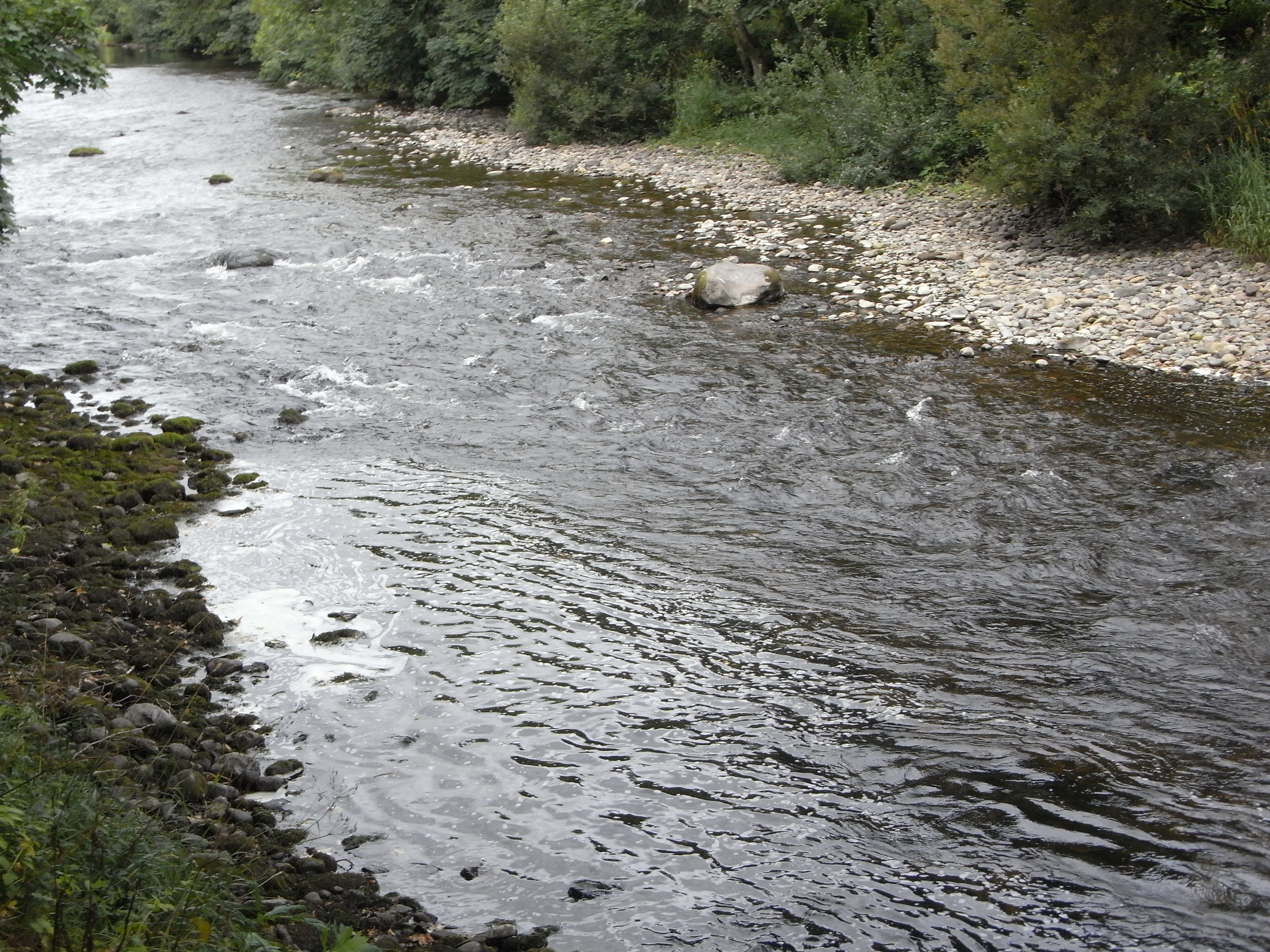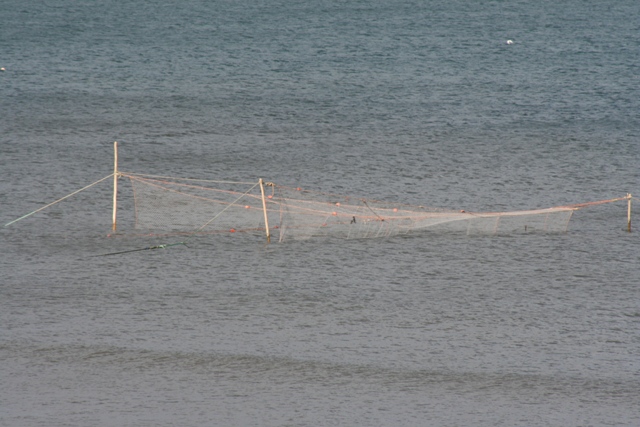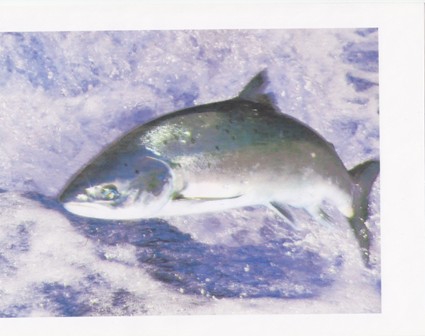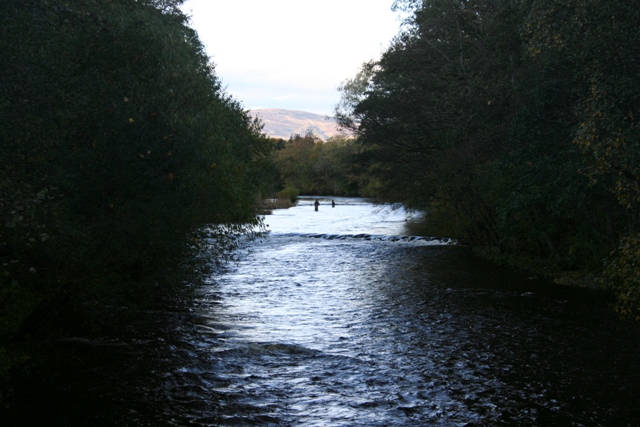These bulletin blogs represent news about Finavon and the South Esk, and my views as a riparian owner. While I may digress at times to write about other places, these are not the views of any other organisation, nor are they designed to promote the interests of any individual or organisation other than Finavon Castle Water and factors affecting the fishery. Tony Andrews
October remained mild to the last, which may have affected the willingness of salmon to take the fly. Certainly it has been very strange year, dominated by low water in the 122 days between the end of May and the beginning of October. There might be some compensation if it was a good vintage in Bordeaux!
Very low water in the summer of 2013
Salmon and sea trout have been hard to catch, except for a brief flurry of catches in April and May, and again towards the end of October. The height of the sea trout season in June and July was severely affected by low water. There were large shoals of sea trout lying up in the Boat Pool for a short period in July, which I mentioned in a previous blog.
The late Earnley Gilbert, son of H.A. Gilbert, author of ‘Tales of a Wye Fisherman’, made a perceptive comment about the South Esk at Finavon in 1990 when he remarked during a dry spell in September of that year, “Nae water, nae fish”. How true! Even with a few fish in the pools, as indeed there were all summer long, without water, and with the low river exposing stones seldom seen, the chance of catching a fish was remote. We ended our season with 57 salmon and grilse and 31 sea trout. That is Finavon’s lowest catch since 1984.
Regular readers of these blogs will recognise these nets in Lunan Bay belonging to Usan Fisheries Ltd. As we learn more about the extent of the ‘influence’ of this mixed stocks fishery and of the potential threat to ‘the rivers in-between’ (See previous blog; ‘Rivers in Between’ dated 22 September 2013) we have to answer the question, “How can fishery managers of any Scottish east coast river take effective action to conserve fragile populations while this indiscriminate anachronism continues?” If politicians are worried about fair play let us call their bluff and close the whole South Esk District to all forms of exploitation (rods and nets) of both salmon and sea trout. Noone, not the netting interests, not recreational fishery owners, has any right – commercial, legal or human – to exploit a threatened natural species. Conserving wild salmonids must be our number one priority.
Did other South Esk beats fare any better? As regular readers of these blogs will know, I make an assumption that the declared catches from 4 major South Esk beats probably represent two thirds of the total South Esk rod catch. Here are the 2013 catch returns from those 4 beats:
| Beat | Salmon before31st May | 2013 Salmon total | Sea Trout |
| Cortachy & DP | 24 | 110 | 74 |
| Inshewan | 23 | 84 | 31 |
| Finavon Castle | 20 | 57 | 31 |
| Kinnaird | 54 | 156 | 57 |
| Kinnaird nets | 22 | ||
| TOTALS | 143 | 407 | 193 |
Upper Kinnaird did well in the spring and Middle Kinnaird caught up in the autumn. Cortachy and DP caught reasonable numbers of fish in the spring and back end, although their seasonal total is well below average. Inshewan did better than Finavon for salmon and grilse, and caught the same number of sea trout. Both beats’ catches were well below average, especially Finavon with about 30% of its ten year average for salmon.
With a season’s total of 407 salmon and grilse from these four beats we might expect the total rod catch for the whole river to be in the order of 610, which is a bit over half the long term average. As for sea trout, if we apply the same crude formula as above, the total rod sea trout catch for the South Esk could be as low as 290.
In an extended low water year, as 2013 certainly was, we cannot expect a high rod catch. Similar previous dry years, such as 1975 and 1976, show catches of sea trout at Finavon as 12 and 17 respectively. Catches of salmon and grilse were 17 and 15 in those two dry years. But there are anomalies such as 1994 when, in another dry year, Finavon caught 242 sea trout. In that same year the net and coble fishery in Montrose Basin caught 2,200 sea trout, c.650 grilse and about 280 salmon. That was the last year the Basin was netted.
A low river, low angling effort, and a shortage of both salmon and sea trout could not add up to a successful season, as indeed it did not! Put in those stark numerical terms it is all too easy to argue that the South Esk’s stocks have collapsed. But, if we look at the big picture, the last hundred years as opposed to the last five, we can see that we have been here before. Of course the most dominant ‘big picture’ factor is marine mortality, which is currently about 5% survival for MSW salmon and maybe between 6% and 10% for grilse.
Our natural freshwater smolt ‘factory’
While there are undoubtedly improvements that need to be carried out within the river catchment, it is perhaps fair to claim from observation that the South Esk is sending reasonable numbers of smolts to sea. With more than 90% of those smolts dying at sea and some serious doubts over the viability of certain populations within the stock, is it really wise to continue with a commercial fishery, let alone a mixed stocks one, in the South Esk District?


